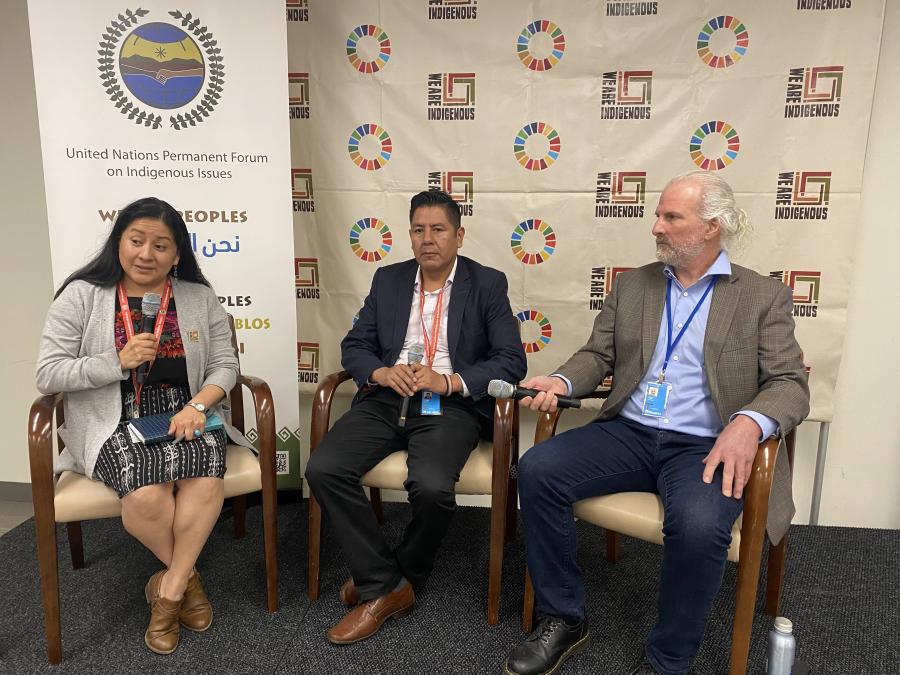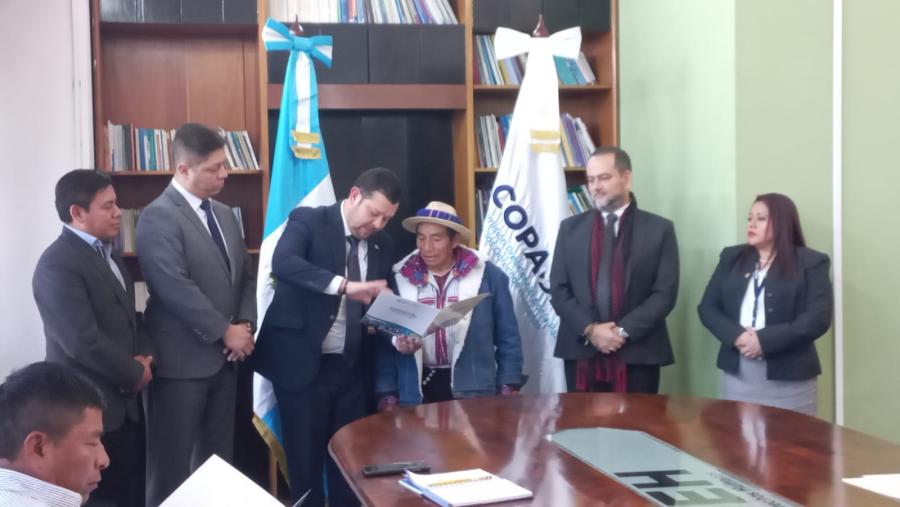We have interrupted the schedule of the Quarterly to publish this issue on Guatemala. Although in Guatemala the most dramatic acts of violence have subsided, profound changes are overtaking the nation while international attention focuses on other issues and areas of the world.
After a series of massacres of innocent people - mostly Indians, General Efraín Ríos Montt and his supporters now claim that Guatemala is at peace. It is no wonder. People who have been uprooted, whose crops and houses have been destroyed and whose children are starving are now finding it difficult to resist government programs which allegedly proffer food and protection in return for loyalty.
The articles in this Quarterly describe the resilience of the Mayan culture of Guatemala's Indians and the repeated efforts undertaken to destroy it. As Gordon Willey writes, the Maya "were not interested in empires. They were frequently impinged upon by others...But...they resisted all these imperialisms, rejecting some things completely, absorbing others, and reworking still other traits and ideas of their invaders to conform to their own Maya tradition."
The Ríos Montt government poses familiar threats to Mayan culture. There are indications, however, that today's threats are perhaps more fundamentally disruptive than any previously encountered by these people. Twenty percent of all Mayans have fled their homes. Thousands have been killed. Mayan Indians live in fear of speaking their language or wearing traditional clothes. They are afraid they will be identified as Indians and thus, as "subversives." Sacred sites and large areas of forest have been destroyed. Agricultural lands have been sprayed with herbicides.
The calm that supposedly resides in Guatemala today will be the pretext for increased military and economic aid from governments such as the United States, from bilateral lending institutions such as the Inter-American Development Bank and from religious groups such as the Church of the Word.
This issue of the Quarterly is our attempt to provide the background information necessary to interpret recent events in Guatemala and evaluate the effects of proposed funding to the current dictatorship.
The articles that follow were written by anthropologists. Most were presented at the American Anthropological Association's annual meetings in Washington, D.C., 4-7 December 1982.
Shelton Davis' first article provides a general context for understanding the present situation in Guatemala. His article describes how Indians were forcibly recruited to work on coffee plantations, and how they benefitted from the governments of Arevalo and Arbenz and later from the programs of the Roman Catholic Church. In the 1960s and 1970s, however, Indians in Guatemala became aware of a number of economic and social issues affecting them and began to organize. They began to analyze their current situation and demand political and economic changes which allow them to actively participate in the future of the country. Davis writes: "The Guatemalan military was not prepared to let the indigenous population participate in national politics."
Against this contemporary backdrop, Gordon Willey describes the history of the Mayan people and some of the more notable achievements of Mayan civilization.
Doug Brintnall examines the growth of Indian consciousness in two villages during the last decade and compares this to the American civil rights movement.
Jude Pansini examines the history of seasonal plantation work by Guatemalan Indians and the "benefits" they derive from it, while Norman Schwartz discusses ethnicity, politics, and cultural survival in Guatemala today.
The Church has been an important factor in the lives of indigenous peoples in Guatemala. Thomas Melville describes the work of the Catholic Church in Guatemala since 1942 and makes a strong case for the importance of "their programs in juvenile and adult education, leadership training, and even cooperative(s)," as catalysts for organization between indigenous populations.
David Stoll, by comparison, reflects on the activities of the Church of the Word and its influence on born-again follower General Ríos Montt.
In his second piece, Shelton Davis discusses what role "development" assistance has played in Guatemala's recent history and speculates on the military benefits that will be derived from the recently approved Inter-American Development Bank loan to Guatemala for rural telecommunications.
Norma Chinchilla writes about the nature of the current crises in Guatemala. She believes that "it is this vision of equality and multi-ethnic unity that makes the Guatemala revolution so threatening to those who are used to governing..."
Beatriz Manz describes, in general, the conditions of displaced people in Guatemala and refugees in Mexico while Ricardo Falla documents a single representative massacre which caused thousands of people to flee to Mexico. Excerpts from the America's Watch Report on Guatemala are included for background information.
Finally, a list of all references cited can be found at the end of the Guatemalan articles. There is also a list of current periodicals which focus on Guatemala.
These articles are by no means definitive statements concerning the current crisis in Guatemala. It is our hope that they will inform our readers and focus public attention on a country that might otherwise be forgotten.
Article copyright Cultural Survival, Inc.



